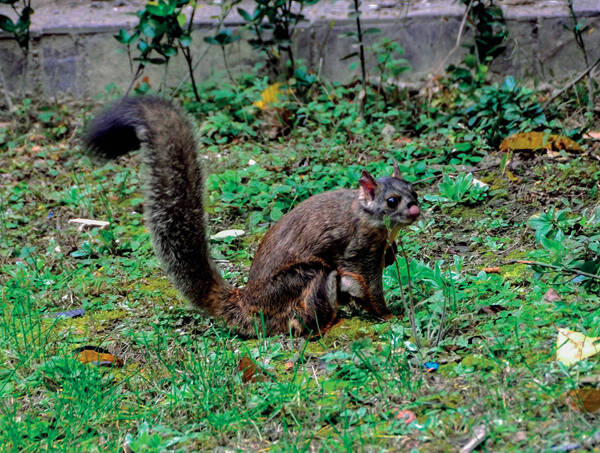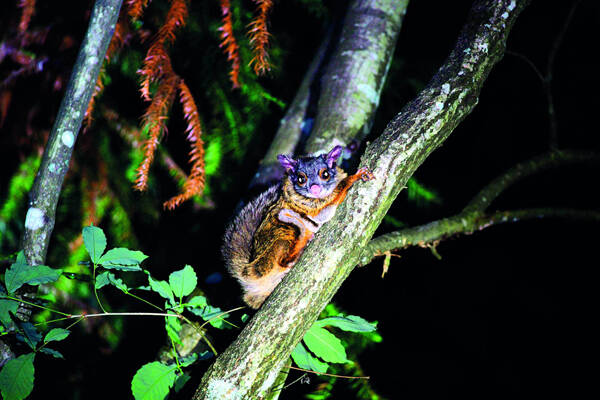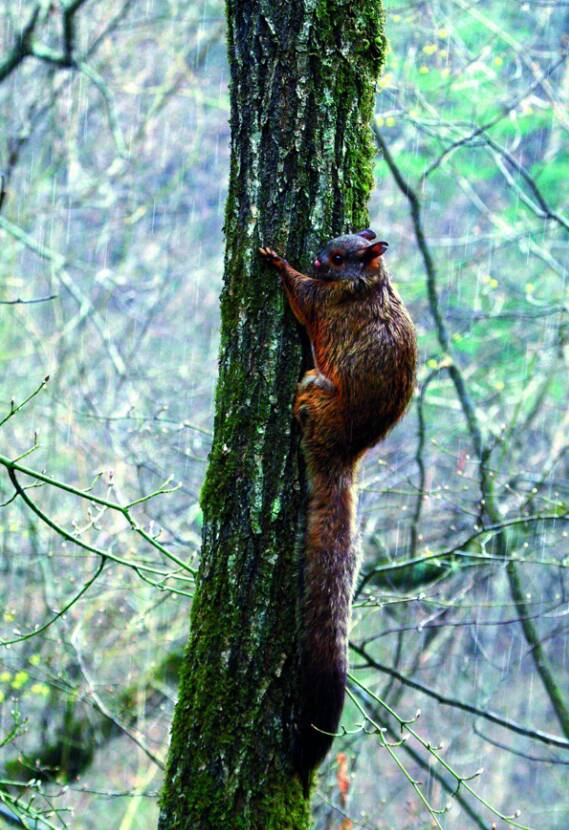Petaurista caniceps
IUCN
LCBasic Information
Scientific classification
- name:Petaurista caniceps
- Scientific Name:Petaurista caniceps, small flying squirrel, small flying squirrel, flying squirrel, flying tiger
- Outline:Rodents
- Family:Rodentia Sciuridae F.Squirrel
Vital signs
- length:450mm
- Weight:About 576g
- lifetime:
Feature
The back hair is dark brown, the belly hair is deep orange-red, the tail is longer than the body, and the tail hair is fluffy.
Distribution and Habitat
In China, it is distributed in Tibet, Yunnan, Guizhou, Sichuan, Chongqing, Guangxi, Hubei, Hunan, Gansu and Shaanxi. Abroad, it is distributed in India, Nepal, Bhutan and northern Myanmar.
It mainly lives in broad-leaved forests, mixed coniferous and broad-leaved forests and coniferous forests at an altitude of about 1000-3500m.
Appearance
The snout is relatively short, the forehead is mainly gray, the throat is white, the ears are black, the base is gray-brown and there are light red spots on the inside. There are no white spots on the back of the body (this is the main difference from the white-spotted small flying squirrel), the wing membrane is chestnut brown, the chest and abdomen are brown-gray (some individuals are orange), and the back and wing membrane edges are gray with a slight black color. The back and back feet are orange-red, the tail is light brown with black hair, and the tail tip is black.
Details
The gray-headed flying squirrel is medium-sized, arboreal, and usually moves alone. It is a nocturnal animal, spending most of its time in trees, sleeping in tree holes during the day, and coming out at night to find food. Young leaves, seeds, fruits and flower buds are its favorites. Flying squirrels like quietness, so they usually live alone. It is agile and good at climbing. It has a wide and hairy flying membrane between its front and back limbs, which allows it to glide in the forest. Wild flying squirrels have high requirements for the ecological environment and will reproduce in a suitable environment. Once the ecological environment is destroyed, wild flying squirrels will seek other places.

Its living habits have "six major" characteristics:
First, it does not build nests, but lives in ready-made rock wall cracks or caves.
Second, it likes quietness and is timid.
Third, they are afraid of both cold and high temperature.
Fourth, they hide during the day and come out at night to forage for food and chirp; Fifth, they defecate at a fixed point.
Sixth, they glide. Once they encounter enemies or special circumstances, they spread their flying membranes and glide from top to bottom to escape.
They breed and give birth in May, with 1-4 babies per litter.

The dried feces of the orange-footed flying squirrel and flying squirrel, both of the family Sciuridae, is a commonly used blood-activating and blood-stasis-removing medicine. Flying squirrels are also known as winter squirrels, and gray-black feces are often seen near their caves. According to pharmacological determination, Wulingzhi contains a large amount of resin, uric acid and vitamin A substances, and is often used raw or fried in clinical practice. Raw use can promote blood circulation and stop pain, treat various pains in the heart and abdomen, amenorrhea in women, and postpartum blood stasis pain. It can also be used to treat bites from poisonous insects such as snakes, scorpions, and centipedes. Stir-fried use can stop bleeding, treat women's uterine bleeding, menorrhagia, and continuous red discharge.
The flying squirrel is a national second-level protected animal and is protected by national laws. It is illegal to buy, sell, kill, or eat it, and it is also illegal to keep it as a pet.









